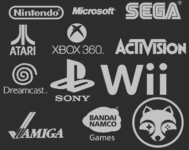PS to PS5
The Evolution of the PlayStation: From 1994 to the Future
The First PlayStation (1994)
The first in the series, the original PlayStation was released in December 1994. It had a 33 MHz RISC CPU and a GPU capable of displaying 3D graphics. The first PlayStation had 2 MB of RAM and a video output of 512×448 pixels. It also had an optional memory card for saving game progress and a CD-ROM drive for playing games.
The PlayStation 2 (2000)
The PlayStation 2, the successor to the first PlayStation, was released in March 2000. It had a 300 MHz CPU and a GPU capable of displaying high-quality graphics. The PlayStation 2 had 32 MB of RAM and a video output of 640×448 pixels. It also had a DVD drive, allowing it to play not only games but also DVDs.
The PlayStation 3 (2006)
Released in November 2006, the PlayStation 3 was a significant step up from its predecessor. It had a 3.2 GHz Cell Broadband Engine and a video output of 1080p. The PlayStation 3 also had 256 MB of XDR RAM and 256 MB of GDDR3 RAM. It had a built-in hard drive for storing games and data and allowed players to download and play games from the PlayStation Network.
The PlayStation 4 (2013)
The PlayStation 4 was released in November 2013 and boasted improved hardware and graphics capabilities. It had an 8-core x86-64 AMD “Jaguar” CPU and a GPU capable of displaying 4K resolution. The PlayStation 4 also had 8 GB of GDDR5 RAM and a built-in 500 GB hard drive for storing games and data.
The PlayStation 5 (2020)
The latest iteration of the PlayStation, the PlayStation 5, was released in November 2020. It features cutting-edge hardware and features, including a custom AMD Zen 2 CPU and a GPU capable of displaying 4K resolution at 120 frames per second. The PlayStation 5 also has 16 GB of GDDR6 RAM and a built-in SSD for fast loading times and more immersive gameplay.
What the Future May Hold for the PlayStation
It is possible that the PlayStation 6 will feature a more advanced CPU and GPU, allowing for even more realistic and immersive gameplay. The console could also have increased memory and storage capabilities, allowing for larger games and faster loading times. Virtual and augmented reality technology is also likely to play a role in the design of the PlayStation 6, offering players an even more immersive gaming experience. Additionally, the console may feature advanced AI technology, allowing for more intuitive and adaptive gameplay.
In terms of design, the PlayStation 6 may be smaller and more compact than its predecessors, making it more convenient for players to use. The console may also have a more streamlined and user-friendly interface, making it easier for players to navigate and access their games.
It’s important to note that these are just educated guesses and it’s impossible to know for sure what the PlayStation 6 will look like. However, one thing is certain – Sony will continue to push the boundaries of video game technology, offering players an ever-evolving and exciting gaming experience.
Copyright © 2023 YittyBytes.com. All rights reserved. No part of this text may be reproduced, stored in a retrieval system, or transmitted in any form or by any means, electronic, photocopying, recording, or otherwise, without prior written permission of the copyright owner.


